The composition is typical of icons of the Virgin and Child, or Theotokos, in the Byzantine tradition. The Virgin, depicted facing forward, holds the Infant Jesus in her arms, in a pose imbued with tenderness and solemnity. She is dressed in a dark brown cloak with golden highlights, adorned with star motifs symbolizing her purity and divinity. The Child, seated on his left arm, wears a green tunic and an orange-red drape, vibrant colors that contrast with the sobriety of the Virgin's robe. Two angels, placed in the upper corners of the composition, surround the scene and add a celestial dimension, their outstretched wings and gestures of adoration reinforcing the sacred character of the whole. The golden background, typical of Byzantine icons, creates a luminous aura around the figures, isolating them in a divine and timeless space.
The colors used in this work are both rich and symbolic, in keeping with the conventions of religious art of the time. Here is an analysis of the main hues, with their approximate hexadecimal codes for better visualization:
Gold (#D4AF37): Used for the background and halos, it symbolizes divine light and eternity. Dark brown (#3F2A1D): Present in the Virgin's mantle, it evokes humility and earth, while contrasting with the golden background.
Deep green (#355E3B): The color of the Child's tunic, it represents hope and life.
Orange-red (#E74C3C): Used for the Child's drapery, it symbolizes divine love and sacrifice.
The Veneto-Cretanean school, which flourished between the 15th and 17th centuries, was born from the encounter between the Byzantine traditions of Crete and the influences of the Venetian Renaissance, after the fall of Constantinople in 1453. Cretan artists, fleeing Ottoman occupation, settled in Venice, where they incorporated elements of Italian painting while preserving the codes of Byzantine iconography. This work perfectly illustrates this synthesis: the rigidity of the figures and the gilded background recall Byzantine art, while the softness of the faces and the details of the draperies reveal a nascent Venetian influence.
This type of Virgin and Child was intended for private devotion or to adorn small chapels, and its compact size (29.4 x 29.6 cm) makes it an intimate object, designed for close-up contemplation. The presence of angels and star motifs on the Virgin's mantle is a recurring motif in Marian iconography, symbolizing her position as Queen of Heaven.
The work is extremely fine for a work of this period and school. The panel painting, although showing cracks and signs of wear on the edges, remains in a very satisfactory state of preservation. The pigments have retained their brilliance, particularly the golds and reds, and the details of the faces, imbued with serenity, testify to the artist's talent. The slightly irregular wooden panel adds a material authenticity to the whole.
The panel measures 29.4 cm high by 29.6 cm wide, almost square dimensions that give the work a balanced harmony. The rectangular shape, slightly irregular due to age, is typical of portable icons of the period.
Extremely careful shipping.
#VirginAndChild #VenetianCretanSchool #ByzantineIcon #ReligiousArt #16thCentury #PanelPainting #VenetianRenaissance #Theotokos #SacredArt #ArtisticAntiquity


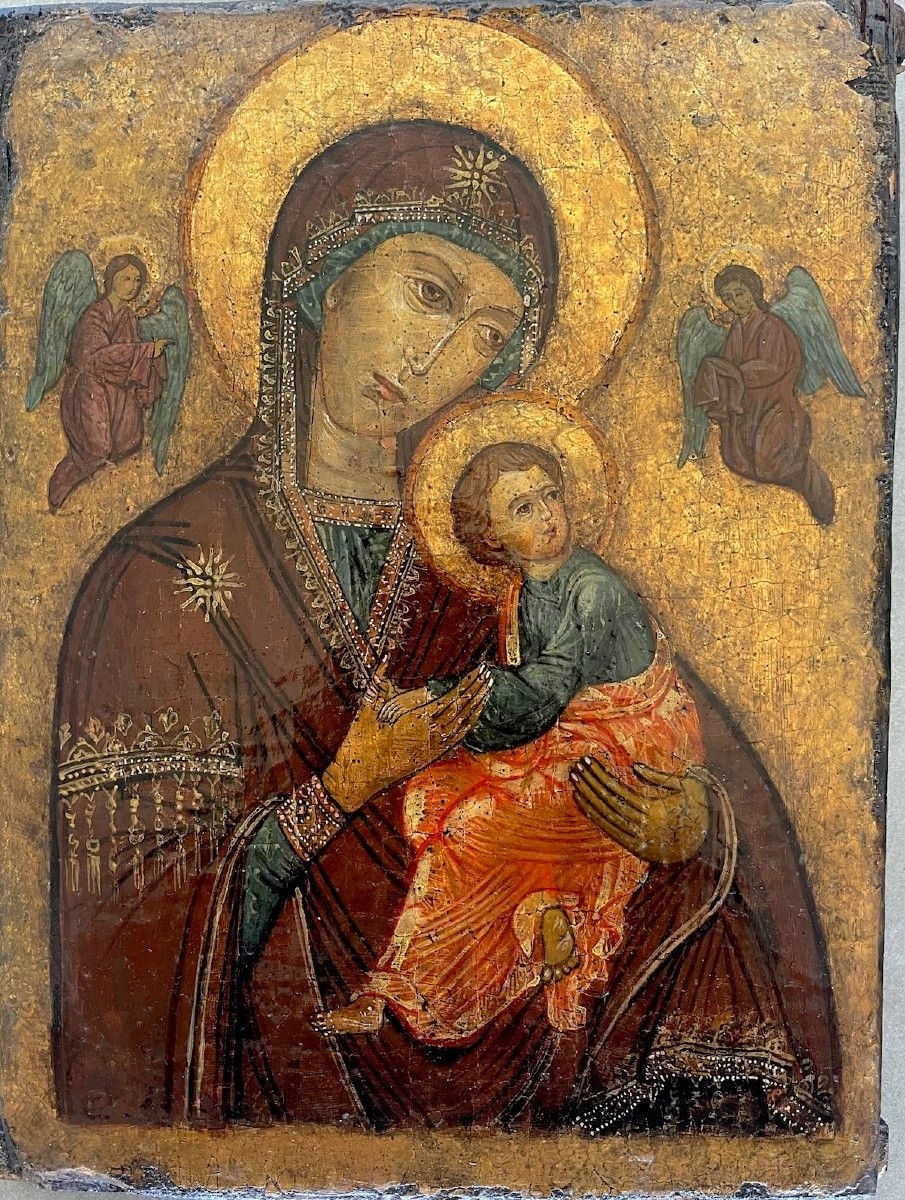


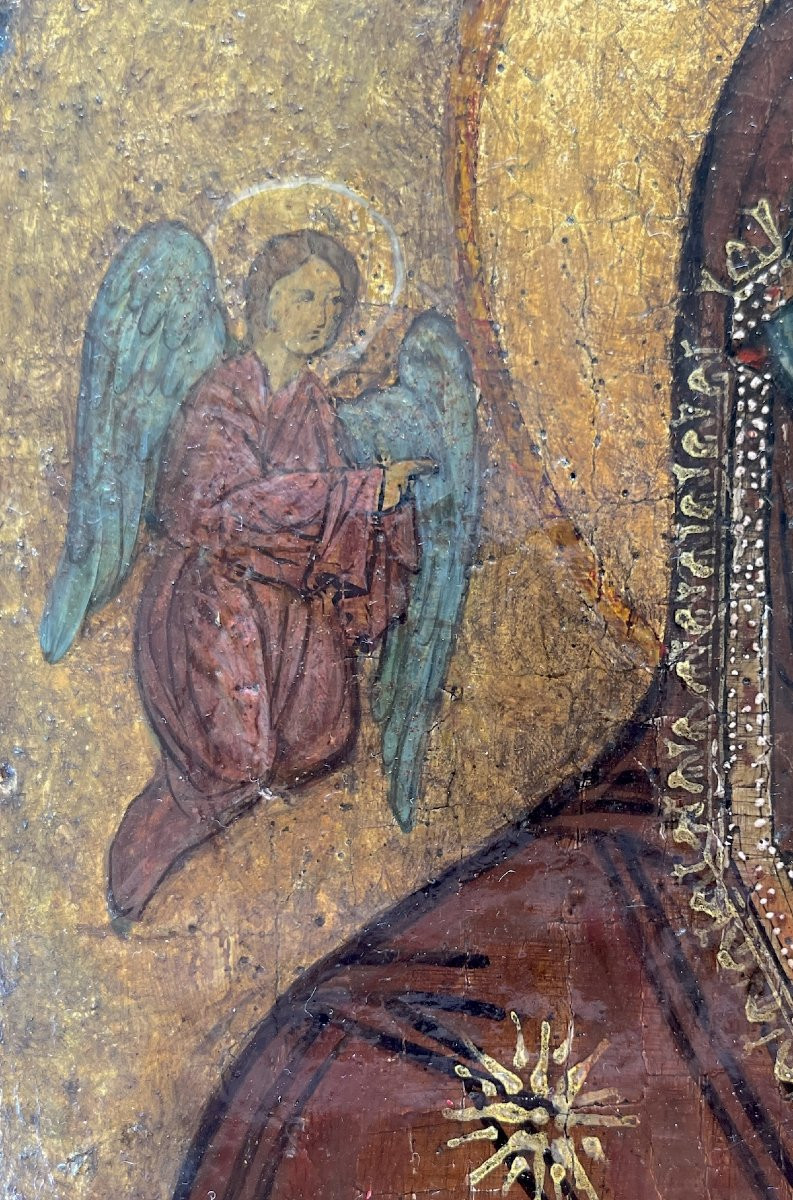

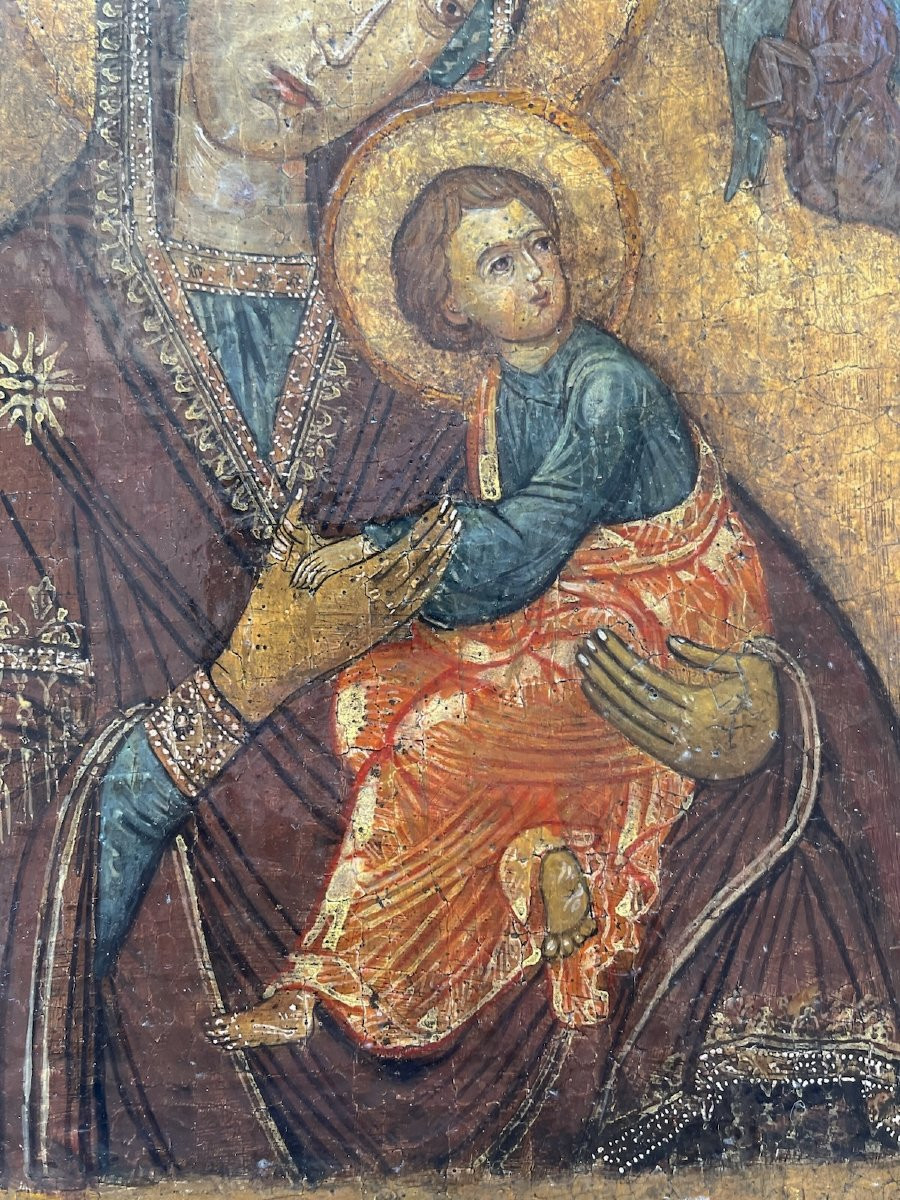



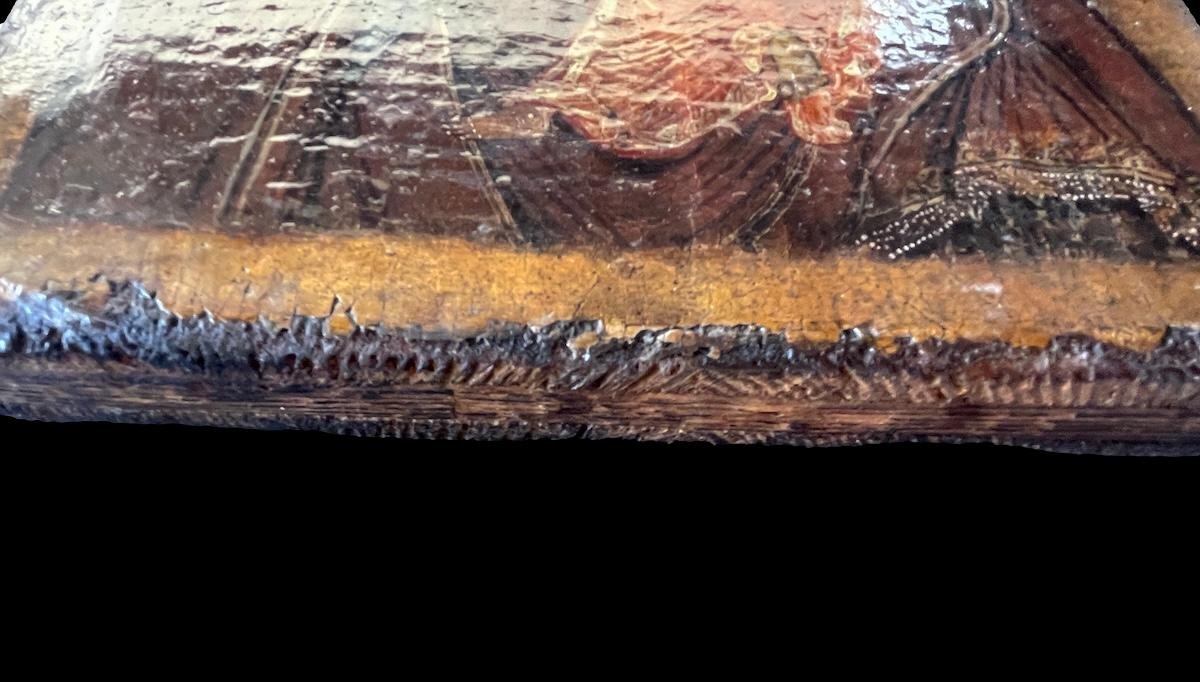















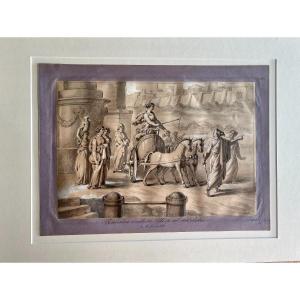






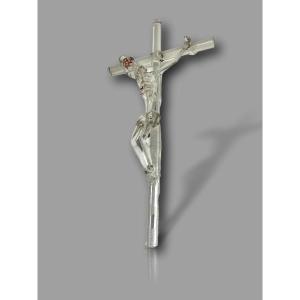







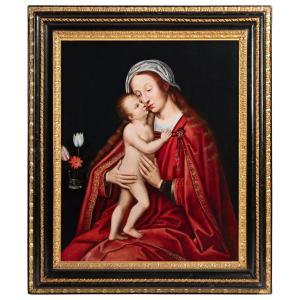



 Le Magazine de PROANTIC
Le Magazine de PROANTIC TRÉSORS Magazine
TRÉSORS Magazine Rivista Artiquariato
Rivista Artiquariato